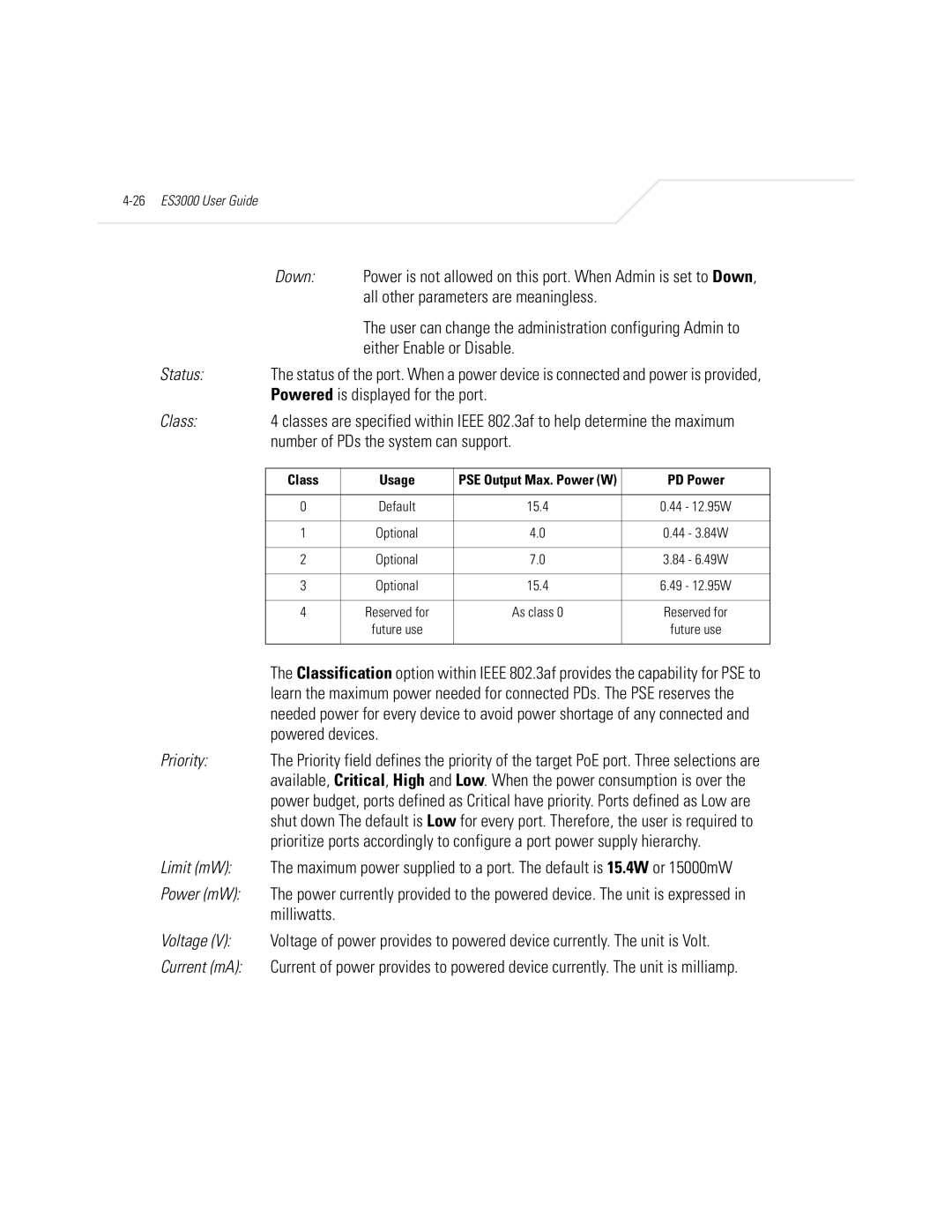Down: Power is not allowed on this port. When Admin is set to Down, all other parameters are meaningless.
The user can change the administration configuring Admin to either Enable or Disable.
Status: The status of the port. When a power device is connected and power is provided, Powered is displayed for the port.
Class:4 classes are specified within IEEE 802.3af to help determine the maximum number of PDs the system can support.
Class | Usage | PSE Output Max. Power (W) | PD Power |
|
|
|
|
0 | Default | 15.4 | 0.44 - 12.95W |
|
|
|
|
1 | Optional | 4.0 | 0.44 - 3.84W |
|
|
|
|
2 | Optional | 7.0 | 3.84 - 6.49W |
|
|
|
|
3 | Optional | 15.4 | 6.49 - 12.95W |
|
|
|
|
4 | Reserved for | As class 0 | Reserved for |
| future use |
| future use |
|
|
|
|
The Classification option within IEEE 802.3af provides the capability for PSE to learn the maximum power needed for connected PDs. The PSE reserves the needed power for every device to avoid power shortage of any connected and powered devices.
Priority: The Priority field defines the priority of the target PoE port. Three selections are available, Critical, High and Low. When the power consumption is over the power budget, ports defined as Critical have priority. Ports defined as Low are shut down The default is Low for every port. Therefore, the user is required to prioritize ports accordingly to configure a port power supply hierarchy.
Limit (mW): The maximum power supplied to a port. The default is 15.4W or 15000mW
Power (mW): The power currently provided to the powered device. The unit is expressed in milliwatts.
Voltage (V): Voltage of power provides to powered device currently. The unit is Volt.
Current (mA): Current of power provides to powered device currently. The unit is milliamp.
